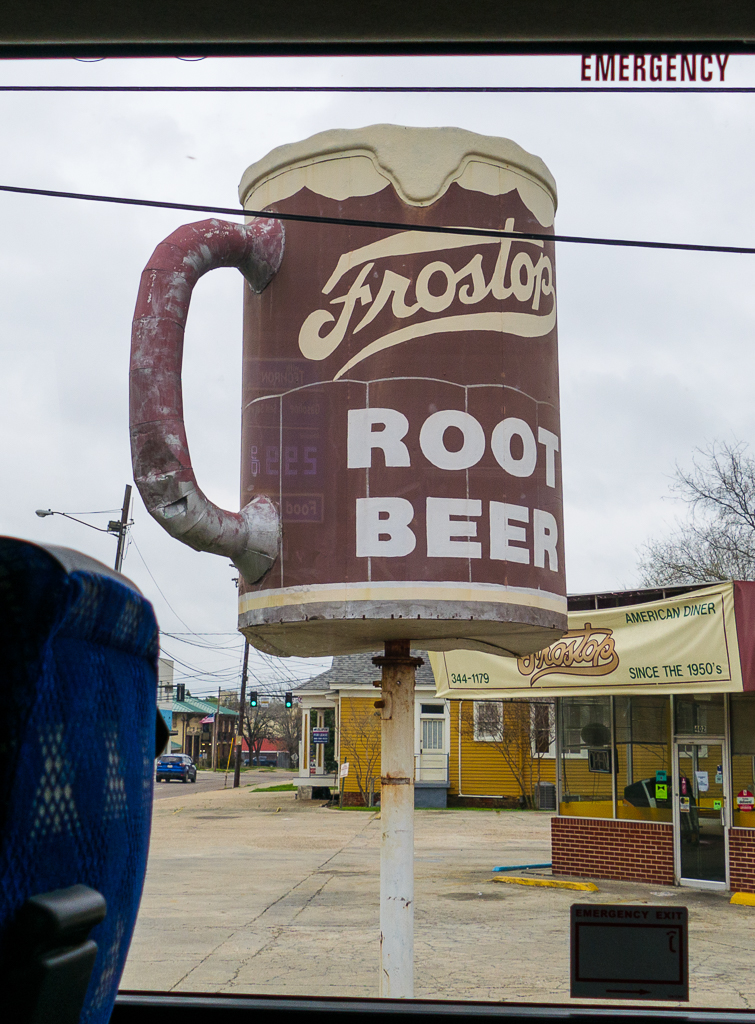Our excursion this morning took us to the sites of the three Battles of Baton Rouge. The first took place near the current State Capitol (very near the river), where the Spanish drove the British out of Louisiana in 1779. The photo below shows the Louisiana Department of Public Safety getting ready to tell our bus driver to move the bus Or Else, but we can say that we stood at the site of the battle. Briefly. :-)
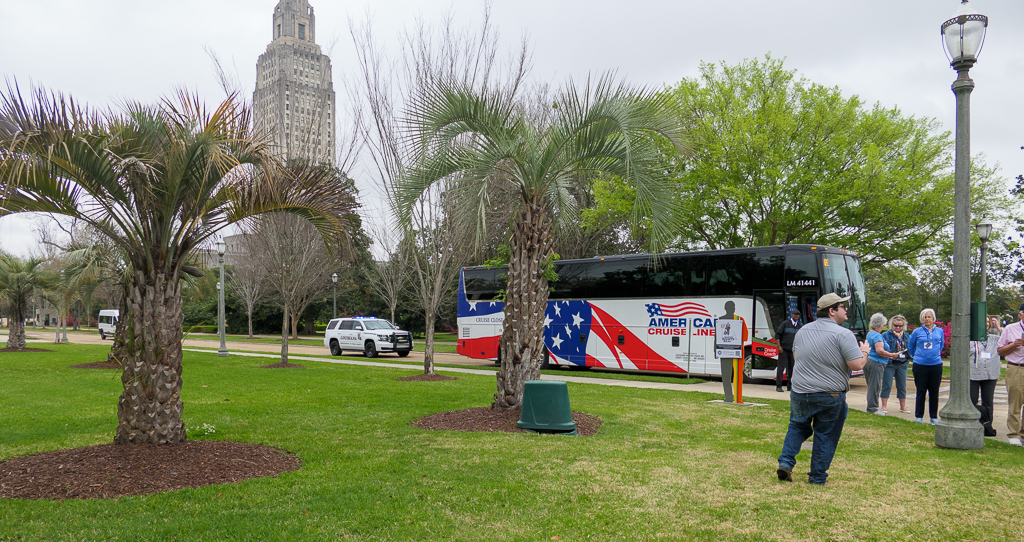
Once we were safely on the bus and away from the cops, our guide finished the story of the first battle and told us about the second Battle of Baton Rouge, a key part of the brief but glorious history of the Republic of West Florida. The Louisiana Purchase didn’t include Baton Rouge or the land due east which was still owned by the Spanish along with Florida itself; however, there were many Americans who’d moved into the Baton Rouge area, and they did not want to be under Spanish rule, so they stormed Fort San Carlos at Baton Rouge and took it over in a short fight. They created the Republic of West Florida; the United States did not recognize it and President Madison ordered its annexation – by force if necessary. A show of force sufficed, and the Republic eventually acceded to the annexation.
The third Battle of Baton Rouge is probably the best known; it took place a few blocks away from the river, much of it on the grounds of Magnolia Cemetery.
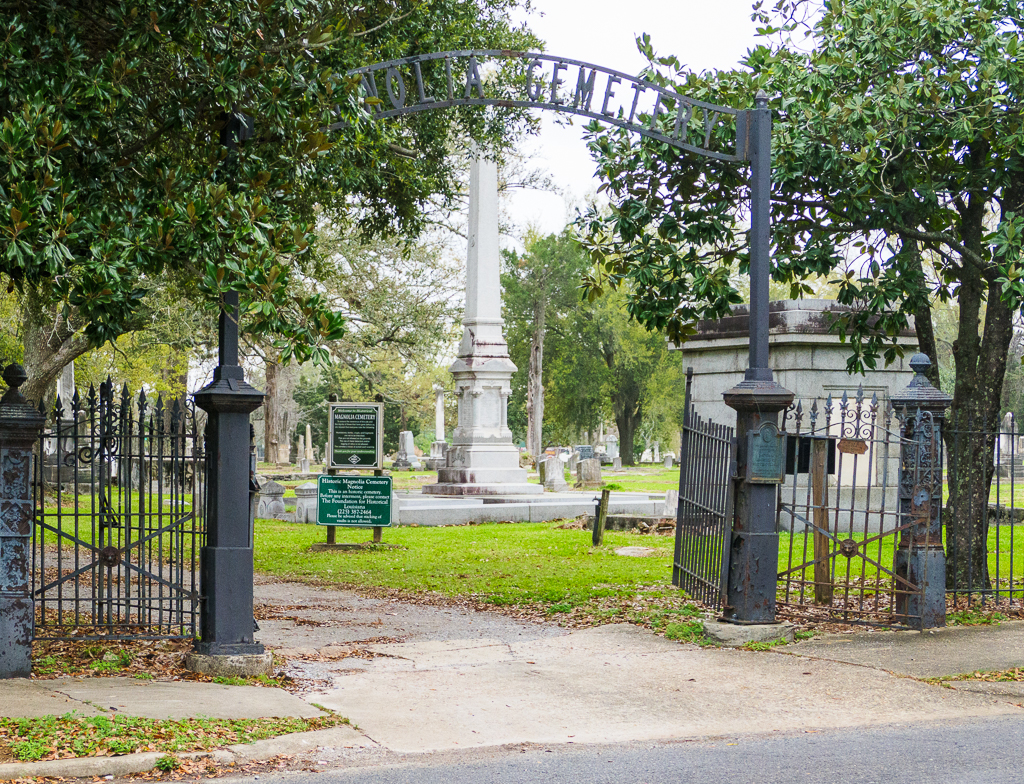
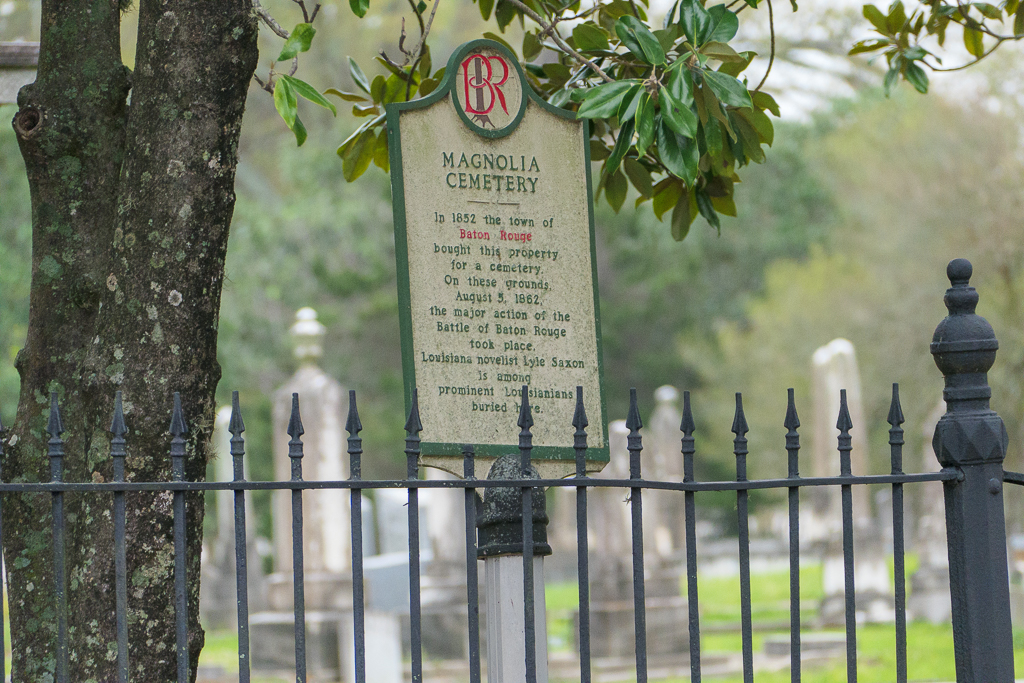
After our guide explained the battle and how it fit into the broader conflict at that time, we got back on the bus and drove to Magnolia Mound Plantation, which was originally built in 1791, renovated and expanded in the early 19th Century, used as a shelter during the Battle of Baton Rouge in the Civil War, and remained a residence until the 1960s. The plantation was 900 acres at first, extending to the Mississippi.
We began our tour in the kitchen (not the original building but a recent reconstruction).
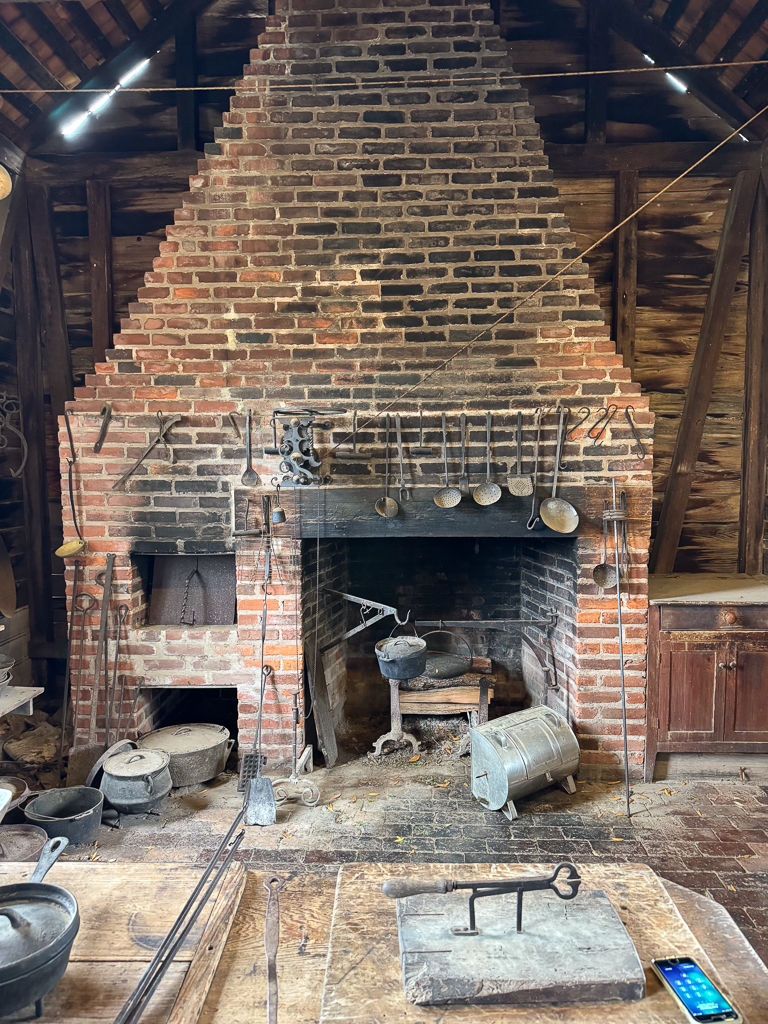
Then we moved to the house itself, with period furnishings. I thought the most interesting single item I saw was the “shoo-fly fan” above the dining room table; it was human-powered (probably an enslaved boy).
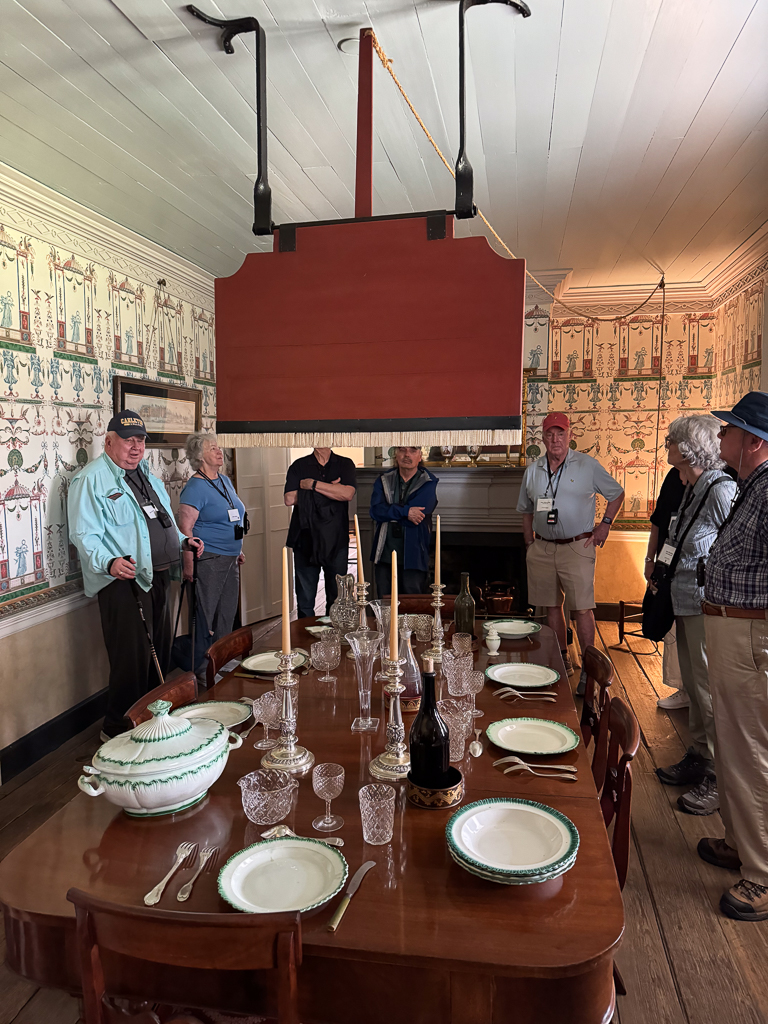
Louisiana civil law is based on the Napoleonic Code, which allowed women to own property. Jane Stanley owned the plantation; when she died without a will in 1789, they had to do a full appraisal of the property to transfer it to her husband. It was originally in French, but they posted a translation; note how enslaved people are listed as property, just like the house itself or silverware.

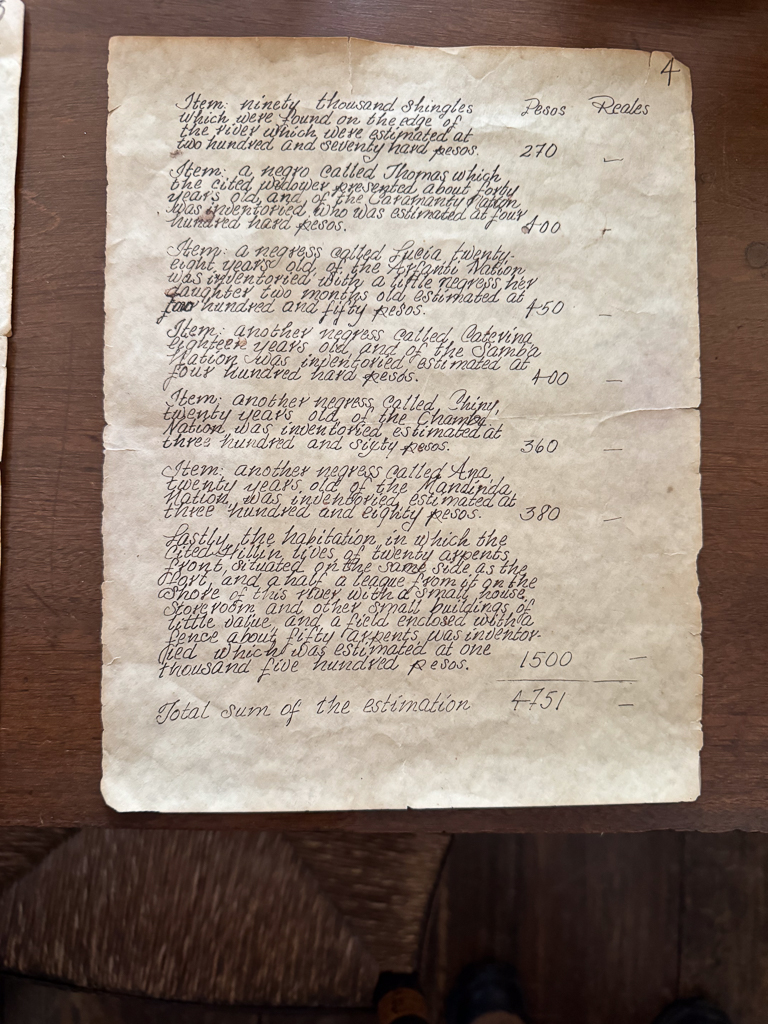
Baton Rouge maintains more modern historical traditions, too, like the Frostop Diner. It’s almost close enough to the ship to walk over for lunch.
